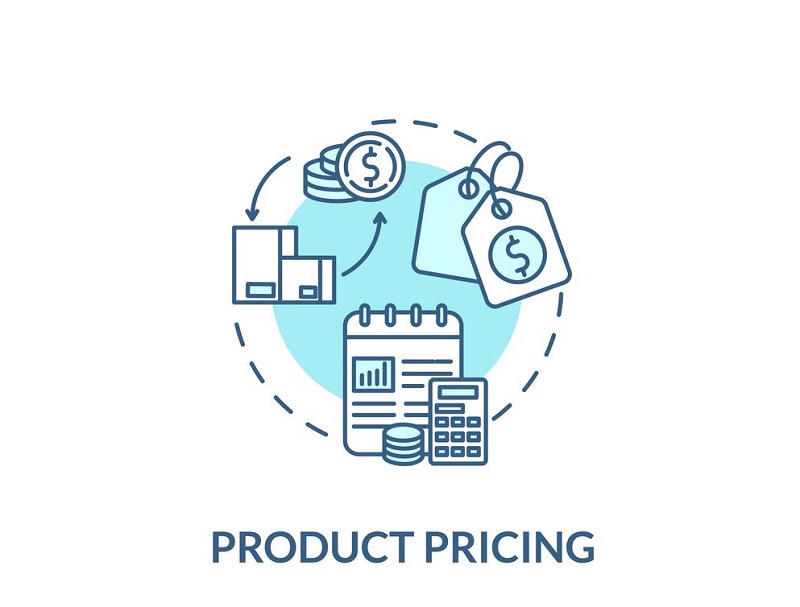
Strategies To Figure Out The Best Price For Digital Products
You might have created an online store and are ready to start selling, but you don’t know how to price your digital products. Pricing your product is the most important and complex decision you need to make as a business owner. Product price has a direct effect on the success of your business. Customers often consider price as the main factor while making purchases. So it is a crucial factor in deciding whether your product is a success or not. If your products are underpriced, you will lose out on potential profits. Even some buyers believe the higher the price, the better the product. On the other hand, when it’s high customers feel intimidated.
So how do you determine the right price tag? Though there is no one-size-fits-all pricing approach, there are many strategies designed that maintain a balance between product costs and effort, profit margin, and market demand.
In this article, we will share those strategies to determine the best price for your digital products.

1. Know Your Customers:
Not every users and buyer of your products are the same. They always have different tastes and different pain points. As you don’t want to price your products out of their budget, it’s necessary to know them first. Before deciding how to price your products, learn who are the users and how best to approach them.
Researching customers is not only the best indicator of what’s working but also lets you know if there is anything customers want that they aren’t getting. Find out the demographics, psychographics and purchasing behaviors of your customers. If they go for the cheapest price or do they prefer value over a low price?
By finding out these things, you get an idea about their pricing sensibilities. As a result, you can decide the pricing for your products. To know your customers and ensure your pricing strategies are aligned with your target audience, you might pay a research firm to gather data or you can use a free tool. Also, you can interview customers and prospects to see what they do and like.
2. Look at Competitor Pricing:
Customers are more likely to compare businesses that offer similar products or services before making their purchase decision. If you’re not aware of what pricing your competitors follow, you may lag behind them. Researching competitors’ pricing gives you a framework for understanding the range of different prices and products on offer, and where you fit in. Staying aware of what services and features your competitors offer and the amount they’re charging, gives you some ideas about how to differentiate.
Copying competitors’ prices can be a drawback also. When you price similarly to competitive products on the market, customers might consider both the products are the same, even if you’re providing important benefits that the others don’t. So don’t completely mirror what your competitors do.
Just follow their strategy and develop your own. If you offer something extra that your competitors’ products do not include, keep your pricing slightly higher or leverage the value-adds in your marketing messages. But if you are offering something similar, try to keep your price lower than your competitor without sacrificing your profit margins.
There are multiple market research tools that give you accurate, focused, and detailed data. Google Alert and Google Trends are two of them, which work differently but help you to research the market.
3. Calculate Your Cost:
Deciding the price for your digital products gets easier once you find out how much you have spent to make your product. Adjusting your price along with the cost ensures you’re always making a profit. It is simple, fast, and lets you quickly add a profit margin to any product you intend to sell. Remember your total cost is always more than just the literal cost of materials. It should include costs like labor, shipping fees, stocking fees, or advertising fees. Though your digital product cost may not have the same measurable metrics as a physical product, you can still get a fairly accurate estimate of how much it will cost to support your business.
Though cost-based pricing is a realistic option, it has some drawbacks. One problem is that it might be impossible to cover all your costs immediately. This problem can cause you to lose money instead of profit. Another problem is when you follow cost-based pricing you might need to increase the prices of your services with costs changing over time. Which can be unacceptable for some consumers. Also, you shouldn’t ignore the time you invest in your business so set an hourly rate and divide that by how many products you can make in that time. However, the price you choose should be what you and your consumers think it’s worth and your customers will pay on a consistent basis. Or you can also keep the price higher than you think you initially should.
4. Consider the Value:
Value-based pricing is a strategy that focuses on the benefits a product can provide. It is a customer-focused pricing where the price of the product is decided based on the worth of the product, not on the based on the cost of its production. To know the product value you need a deeper analysis of your consumer, their needs, and what your customers are willing to pay based on the features and benefits of the product. When you know the value of your product, it helps you to figure out what your market requires, what you are being able to provide, and where you stand in the market.
You build products to solve a problem and enrich your customers’ lives. So your pricing should be in line with the value of the benefits that your business provides along with comparing what your competitors charge. If you can justify your pricing that will give you an advantage over your competitors and you can even charge more. By doing this, not only you can improve the profitability of the company but also your product hold a respectable position in the eyes of its consumers.
However, this pricing strategy doesn’t work for all types of products. This strategy works best in niche markets where you are focusing on the specific needs of your customers. Also, when emotions and feelings of consumers are associated with the product or with the brand of the product. Moreover, this strategy can be least favorable for companies that look forward to growing their business. So, to stay competitive, it’s not research you do one time and are done. Your research must be ongoing.
5. Monitor Your Prices:
Once you successfully learned how to price your digital products, it doesn’t mean your pricing process is over. The business environment is not something constant. It changes continuously with time and affects your goals and margins. Monitoring the market and your competitors is the best way to stay informed about price fluctuations. Check once a week to catch any significant price changes and to investigate the reasons behind them. You can also get feedback from your customers to know what they think about your product prices. Send an email and invite them to a poll or survey in exchange for a voucher or other incentive. By doing this you not only get your customers’ feedback but also prove that you listen to your customers and care about what they think.
Tracking your cost constantly to ensure they don’t rise significantly without your knowledge and mind your operating revenue. Also, ensure your pricing covers expenses and leaves you some profit to fuel growth. Additionally, tracking your sales growth can help you find out whether the public perception of your product changes for any reason. If you find sales are lower than needed, it might signal you to reevaluate your prices. Use your industry knowledge to determine if that means pricing up, down or cutting your own costs and adjust as necessary. If you do raise prices, let your customer know the reason behind it.
Conclusion:
Pricing is the most challenging one among the famous Four Ps (product, place, promotion, and price) of marketing. While pricing physical products you know how much it costs to produce, but with digital products, it’s a whole different ballgame. So pricing shouldn’t be random. Think, plan and research and price your product for what it’s worth.
Hope, this article helped you to learn some great strategies to price your digital products. If you have some more strategies please let us know in the comment section.
For more, business tips check our Blog page. Also, follow our Facebook page and subscribe to our YouTube channel for more updates.









